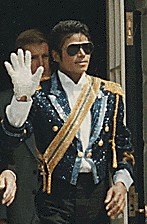Cosmetic surgery
Cosmetic Surgery (Aesthetic Surgery) is the field of surgery in which operations are aimed to improve appearance rather than to cure disease. The goal of cosmetic surgery is to create beauty.
"Aesthetic surgeons, in the normal practice of their specialty, routinely alter the otherwise acceptable physical form of the patient toward the arbitrary and stylized visages thought desirable either by the patient or by the community in general" (Isenberg JS. The legacy of Narcissus.[comment]. [Comment. Letter] Plastic & Reconstructive Surgery. 110(7):1815; author reply 1815-6, 2002 Dec. UI: 12447085).
Benefits and risks of cosmetic surgery
Although cosmetic procedures do not remedy illness, they can have a tremendously beneficial effect for the patient who undergoes them - provided that 1) patient expectations are reasonable and that 2) a satisfactory postoperative result can be obtained. How can surgical intervention be justified when no illness is present? When self-image is improved, a real benefit is almost always conferred. In the case of people whose livilihood depends on personal appearance; such as photogenicity or stage presence, aesthetic surgery can offer the same kind of advantages as exceptional grooming or eye-catching garments. In these circumstances the financial cost of the surgery is often viewed by the patient as a business expense (whether or not it can be deducted as such), - and the time and discomfort involved in undergoing surgery is viewed as a career investment. If, in fact, the desired change in appearance is one that is likely to be technically achieved by procedures that do not confer an undue risk on the patient, then the patient is considered a candidate for cosmetic surgery.
In some situations, aesthetic surgery is performed in order to help increase self-esteem. Such surgery is therapeutic only in selected cases. For example, removal of gang-related tattoos, reduction of scars, straightening of nasal deviations and other physical momentoes from previous assaults can help facilitate rehabilitation. There are certainly individuals who have experienced a tremendous benefit by being freed of these stigmata. In other cases, surgical modification of an unusual feature present since childhood, like a prominant nose or a receding chin, can be a expedient alternative to a continuing struggle to ignore or accept the appearance of these features. However, when low self-esteem is pervasive, then the results of surgical attempts to improve appearance are unlikely to help the individual. Even when results are considered excellent by others, the patient, in that situation, may be unable to acknowledge improvement but instead be excessively bothered by minor scarring or other changes and experience additional loss, rather than gain, of self-esteem.
When congenital anomalies (birth defects) are severe, or when trauma has caused obvious deformity, then surgical improvement of appearance is not called cosmetic surgery, but is classed as a reconstructive procedure. In many countries, reconstructive surgery will be covered by private insurance or government health plans. Cosmetic surgery, on the other hand, is generally considered a luxury that requires payment out of pocket.
The removal of lax skin, resurfacing of sun damaged skin, and tightening of subcutaneous tissues can dramatically remove signs of aging with minimal risk and discomfort. Rejuvenation surgery is often combined with various types of skin resurfacing or dermal fillers. Reversal of a prematurely aged appearance can successfully raise self-esteem in those people bothered by it, and can also be an advantage in maintaining competitiveness in a whole variety of careers in which a more youthful appearance is valued.
On the other hand, real harm can come from cosmetic surgery. Aesthetic procedures do have risks and complications - like all invasive procedures, but outside of these, patients can be especially harmed by submitting to surgical interventions in expectation of an unlikely outcome. Both women and men sometimes seek cosmetic surgery in an attempt to gain affection from disinterested mates, or even at the explicit request of a dissatisfied partner. Other patients falsely assume that disappointment with current life status will be somehow remedied by a surgical change in appearance. These patients can suffer harm from undergoing surgery that is far beyond the discomfort of postoperative healing, with or without surgical complications.
Well-trained ethical aesthetic surgeons are always interested in why their patients desire surgery. Such surgeons, far from "selling" the idea of surgery, will try to dissuade a patient with unreasonable expectations from having surgery, no matter what financial reward is offered. This is not entirely altruistic, it has been said that “a plastic surgeon makes his money from operating and his reputation from refusing to operate.”(reference for quote:Widgerow AD. First signals.[comment]. [Comment. Editorial] Plastic & Reconstructive Surgery. 113(7):2206-10, 2004 Jun. UI: 15253216)
(Menick FJ. "If you've got the money, honey, I've got the time--if you've got no more money, honey, I've got no more time". [Editorial] Plastic & Reconstructive Surgery. 118(2):549-50, 2006 Aug. UI: 16874234)
Human beauty : universal attributes
Symmetry
Cultural & ethnic considerations
Lips
In the 21st Century very full lips are considered to be so attractive that procedures to "fill out" the lips are among the most popular procedures requested of aesthetic surgeons. Not only are varous fillers injected into the lips, but traditional "cold knife' plastic surgery is used to give more lasting results than the fillers can currently provide. (Mutaf M. V-Y in V-Y procedure: new technique for augmentation and protrusion of the upper lip. [Journal Article] Annals of Plastic Surgery. 56(6):605-8, 2006 Jun. UI: 16721070). All of these procedures are generally safe and effective in expert hands, but, interestingly,there was little demand for lip augmentation a generation ago. That's because the fashionable face was different then.
Forty years ago, what are now considered beautifully full lips were more often viewed as excessively thick lips. Rather than lip augmentations, surgeons concentrated on "lip thinning operations" to make the mouth appear smaller and more delicate. Lip reduction operations were a standard part of the facial plastic surgeons repetoire in the 1960's and 1970's, and were the cosmetic lip surgery featured in the plastic surgical textbooks of those times. Currently, as demand has changed, such procedures receive scant mention in the medical literature.
Noses
"Correction" of the ethnic nose
In the 19th and in part of the 20th century, a Northern European Caucasian nose of certain proportions was the one and only aesthetic ideal in the western world. In the earlier portion of that period, outright discussion of the unattractiveness of semetic and negro noses was printed in both lay and professional publications. In the later portion of the 20th Century, wide and hooked noses were no longer so overtly labelled as a detrimental mark of ethnic origin, but still, such features were routinely described as showing "deformities". Patients sought corrections of these attributes that surgeons were willing to provide.
"A 1996 manual describing procedures for altering ethnic noses, for example, indicates that correction of the "Jewish nose" requires "a classic rhinoplasty with lowering of the dorsum, narrowing of the bony pyramid, refinement and elevation of the excessively long hanging tip. Another recent manual, while refraining from explicitly using the Jewish nose as a diagnostic category, notes that 2 patients with noses that "have acute nasolabial angles, plunging tips, or foreshortened nasal tip pyramids" were "of Jewish ancestry" or of "Jewish descent." " (reference for quote:Preminger B. msJAMA: The "Jewish nose" and plastic surgery: origins and implications. [Journal Article] JAMA. 286(17):2161, 2001 Nov 7. UI: 11694162).
The recognition of beauty can change over time, as ethnic characteristics that were once seen as "ugly" because they were a mark of a difference that was held undesireable by the general society become appreciated as intolerance dissipates. For example, the actress Jennifer Grey experienced a set-back in her career when she had a cosmetic rhinoplasty that changed her distinctive natural nose (with a delicate downward hook) into a more generic nose with a diminuitive button tip.
Weir incisions
Jaw lines
Whereas a square angle of the jaw is a mark of great beauty in both men and women of all races in the West, in Asia, in women, the opposite is true. A strong jaw, with a square angle, is traditionally viewed as unsightly. "An operation to correct a square angle into a round, smooth angle" is offered by aesthetic and reconstructive surgeons practicing in the East.(reference for quote:Satoh K. Mandibular contouring surgery by angular contouring combined with genioplasty in orientals. [Case Reports. Journal Article] Plastic & Reconstructive Surgery. 113(1):425-30, 2004 Jan. UI: 14707669) Baek, S. M., Kim, S. S., and Bindiger, A. The prominent mandibular angle: Preoperative management, operative technique, and results in 42 patients. Plast. Reconstr. Surg. 83: 272, 1989 Lee DG. Song CW. Kim SG. Lee YC. Cho BO. A simple technique for reduction gonioplasty. [Letter] Plastic & Reconstructive Surgery. 111(2):951-2, 2003 Feb. UI: 12560737
Facial cosmetic surgery
Rejuvenation of the aging face
Botulinum toxin
"What is so different about the injection of cosmetic botulinum toxin from other injections? Simply stated, neurotoxin injections are a surgical procedure—because the results depend entirely on the injector's knowledge of the underlying muscular anatomy and pharmacology as well as the principles of aesthetics." (reference for quote:Carruthers JD. Caveat emptor (buyer beware).[comment]. [Comment. Editorial] Archives of Dermatology. 138(9):1243-4, 2002 Sep. UI: 12224991)
Dermal fillers
Laser resurfacing
Chemical peels
Body Recontouring
Bengtson B. Absolutes, beliefs, and preferences. [Editorial] Plastic & Reconstructive Surgery. 118(3):798-9, 2006 Sep. UI: 16932193 (smokers, breast implant-abdominal flap contraindication)
Breast augmentation and "lift"
Hsia HC. Thomson JG. Differences in breast shape preferences between plastic surgeons and patients seeking breast augmentation.[see comment]. [Journal Article] Plastic & Reconstructive Surgery. 112(1):312-20; discussion 321-2, 2003 Jul. UI: 12832909
"Belly tuck"
Abdominoplasty
These findings indicate significant improvements in body image outcome, including positive changes in patients’ evaluations of their overall appearance, their average body image dissatisfaction, and their experiences of self-consciousness and avoidance of body exposure during sexual activities. As predicted, no changes were seen on any measure of psychological investment in appearance or on patients’ reports of general psychosocial functioning (self-esteem, satisfaction with life, or social anxiety)".(reference: Bolton MA. Pruzinsky T. Cash TF. Persing JA. Measuring outcomes in plastic surgery: body image and quality of life in abdominoplasty patients. [Journal Article. Research Support, Non-U.S. Gov't] Plastic & Reconstructive Surgery. 112(2):619-25; discussion 626-7, 2003 Aug. UI: 12900625)


